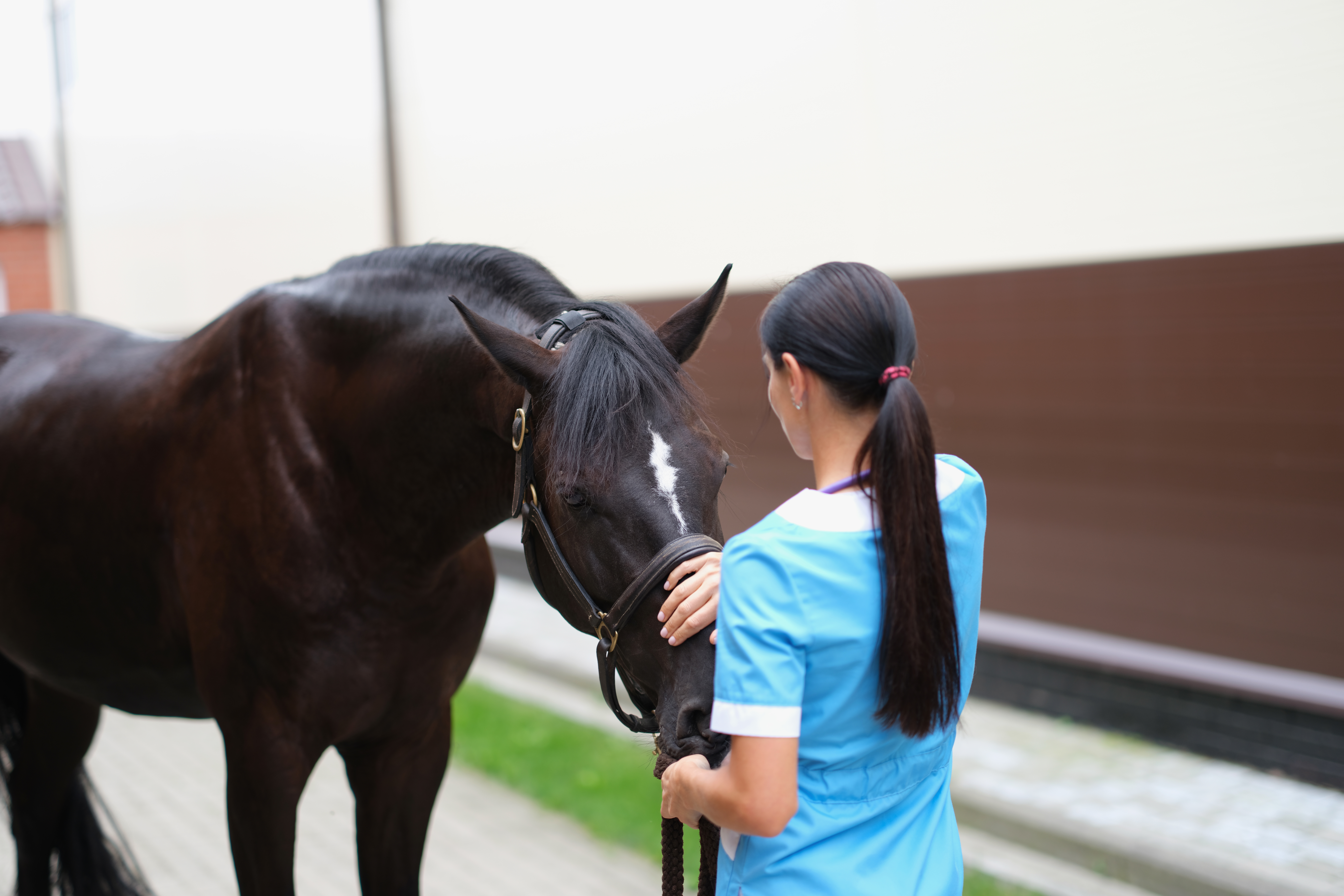
Equine veterinarians have begun to limit their emergency service through various policies. In June 2023, the AAEP Horse Owner Education Committee partnered with the Equine Network family of publications to survey horse owners about their experiences with veterinary services. The survey yielded a total of 2,384 completed surveys, including 1,230 responses from The Horse subscribers, 391 responses from Practical Horseman, 308 responses from EQUUS, and 455 responses from Horse&Rider. You can read more about the survey results here.
Survey participants were asked about their equine veterinarian’s policies for providing emergency care, choosing all that applied (see Figure 1).
| Policies for Emergency Care (Select all that apply) | % | # |
| Charge higher fees for emergencies | 65.8% | 1,568 |
| Only see emergencies for established clients | 38.2% | 910 |
| Require payment at time of service | 33.5% | 798 |
| Require credit cards on file | 18.7% | 446 |
| Require haul-in for after-hours emergencies | 15.5% | 369 |
| Charge higher fees for nonclients | 12.2% | 290 |
| Require annual wellness plan enrollment | 9.6% | 229 |
| TOTAL Respondents | 2,384 |
Charging Higher Fees for Equine Emergency Service
Charging higher fees was the most frequently chosen response. Because the need to see emergencies is one of the important factors that drives veterinarians to leave equine practice, increasing the cost to the client can allow an increase in compensation to those doctors who attend the call. Especially for those who carry high educational debt, receiving additional pay for each emergency seen can soften the pain of the disruption. Paying 100% of the emergency fee to the attending practitioner is highly recommended, as is limiting the number of emergency shifts through participation in an emergency cooperative.
Limiting Emergency Service to Clients
Limiting emergency service to established clients decreases the number of emergency calls. An established client is generally one whose horse has received health maintenance services such as vaccines and dental care within the last 12-24 months. Practices that offer wellness plans might require enrollment for emergency service, but this survey’s results indicate this approach is uncommon. Horses that receive preventive care and annual exams generally experience fewer emergent situations, as most doctors make recommendations about husbandry as well as health during annual visits. For example, “See this big gap between your gate and the gate post? If your horse pushes his head and neck through the gap to graze, gets startled, and then pulls back, he can panic as the narrowed opening closes around his throat.”
Nonclient Policies
For those practices that still see nonclient emergencies, many have increased the emergency fee. Respondents might not be aware of these policies if they are clients, so this percentage could be higher in reality. Often nonclients are horse owners who have no primary care through a veterinarian and call only during emergencies. Because of the uncertainty about the conditions, these situations are much more stressful for veterinarians, especially regarding personal safety—not just with a fractious horse but with the person who has called. If a doctor wants to take on the unknown, a higher fee is most certainly warranted, and associates should always have the choice to opt out of seeing a nonclient emergency.
Payment at Time of Service
According to survey respondents, only a third of practices require clients to make payment at the time services are rendered, and about one in five owners reported they must keep a credit card on file for payment. Payment at the time of services is strongly recommended for all practices, and not just for emergency work. Modern practice management software makes invoicing on the farm very doable. With credit cards on file and signed client forms that give permission to take payment from a credit card on file for all invoices, practices can ensure cash flow and essentially eliminate accounts receivable. Doing emergency work and not being paid for it is the ultimate kick in the teeth.
Haul-in Equine Emergency Services
For those practices with facilities for seeing patients, more are requiring owners to transport their horses to the clinic for emergency care. In many parts of the country, this is already a cultural expectation for all veterinary visits. Working in a well-organized, well-lit, and climate-controlled building increases efficiency, comfort, and safety. Many smaller practices are building haul-in facilities for just this purpose.
The equine veterinary industry is changing as new paradigms take hold. Emergency care is increasingly more expensive and more difficult to obtain, but as this shift takes place, many positive developments are emerging that will ensure care always remains available for our nation’s horses.








